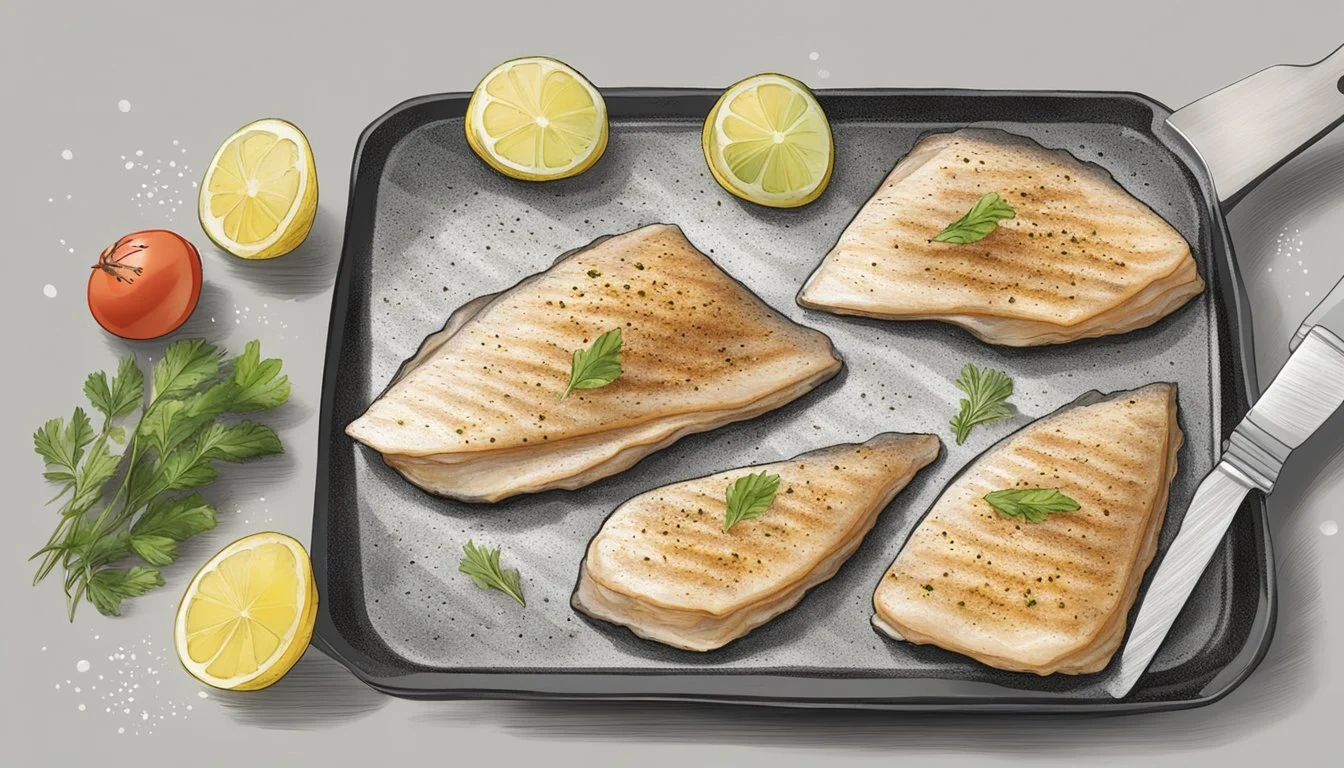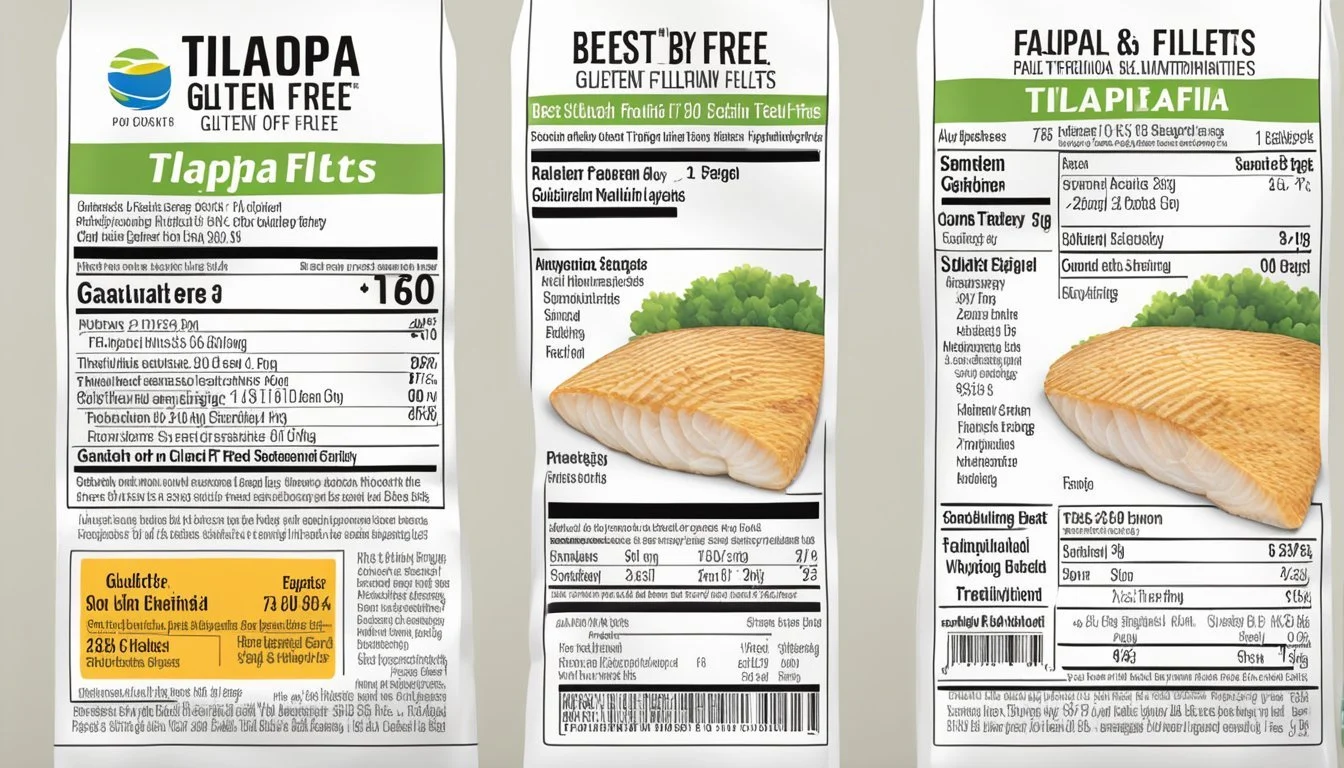How Long Do Gluten-Free Tilapia Fillets Last?
Storage Tips and Shelf Life
Tilapia is a popular choice for those following a gluten-free diet due to its mild flavor and versatility. When stored properly, tilapia fillets can last safely in the refrigerator for up to two days. To maximize freshness, it is crucial to keep the fish at a consistent cold temperature and to consume it within this timeframe.
For those looking to extend the lifespan of their gluten-free tilapia, freezing is an excellent option. Frozen tilapia fillets can maintain their quality for up to six months. Proper packaging, such as using vacuum-sealed bags or airtight containers, plays a key role in preventing freezer burn and preserving taste and texture.
In addition to being a gluten-free protein source, tilapia offers several health benefits. It's low in fat, high in protein, and provides essential nutrients like omega-3 fatty acids and vitamins. Incorporating tilapia into meals not only supports a gluten-free lifestyle but also contributes to overall well-being.
Understanding Gluten-Free Foods
Gluten-free foods provide vital health benefits for individuals with gluten sensitivities or celiac disease. Tilapia, when prepared gluten-free, becomes a nutritious option rich in protein.
Basics of a Gluten-Free Diet
A gluten-free diet excludes gluten, a protein found in wheat, barley, and rye. People with celiac disease or gluten intolerance must avoid gluten to prevent adverse health effects. Gluten-free foods include fruits, vegetables, meat, and fish like tilapia, making it easier to maintain a balanced diet.
Cross-contamination is a concern in gluten-free cooking. Properly cleaning cooking surfaces and utensils prevents gluten from unintentionally contacting gluten-free foods. Label reading is crucial; gluten can hide in additives and preservatives. Certified gluten-free labels provide reassurance.
Benefits of Gluten-Free Tilapia
Tilapia is naturally gluten-free when fresh. It provides a high protein content, essential for muscle repair and growth. When prepared with gluten-free ingredients, such as rice flour or gluten-free bread crumbs, it continues to offer these health benefits without triggering gluten sensitivities.
Baking, grilling, or pan-searing tilapia with gluten-free seasonings can enhance its flavor while keeping it healthy. Including tilapia in a gluten-free diet ensures a good source of omega-3 fatty acids and vitamins, contributing to overall health.
Storing Gluten-Free Tilapia
Proper storage is crucial to maintain the quality of gluten-free tilapia fillets. Key areas to focus on include refrigeration techniques and effective methods for freezing and thawing.
Refrigeration Best Practices
When refrigerating gluten-free tilapia fillets, it is essential to keep them at a consistent temperature of around 32°F to 39°F. Fresh tilapia should be placed in an airtight container or sealed plastic bag to reduce exposure to air and prevent spoilage. Adding a layer of ice inside the container can help maintain the cold temperature.
It is recommended to use fresh tilapia fillets within 1-2 days of purchase to ensure optimal freshness. Placing the fish on a plate and covering it with cling wrap will also help preserve moisture. Refrigeration best practices are key for maintaining the texture and flavor of gluten-free tilapia.
Freezing and Thawing Techniques
For long-term storage, tilapia fillets can be frozen. Before freezing, rinse the fillets under cold water and pat them dry with paper towels. Individually wrap each fillet in plastic wrap or aluminum foil, then place them in a freezer-safe container or heavy-duty freezer bag—this prevents freezer burn.
Labeling the packages with the date will help keep track of storage time. Frozen tilapia maintains its quality for up to six months. When thawing, it is best to move the fillets to the refrigerator. Thawing in the refrigerator takes longer but ensures a safer and more even thaw compared to room temperature or microwaving.
Note: Proper packaging and storage techniques can significantly extend the shelf life of gluten-free tilapia, preserving its freshness and flavor.
Preparation and Cooking Tips
When preparing gluten-free tilapia fillets, consider factors such as suitable breading and seasoning options as well as the best cooking methods to retain flavor and texture.
Gluten-Free Breading and Seasoning
For gluten-free tilapia fillets, start by rinsing and patting the fillets dry with paper towels. Salt and pepper are essential for basic seasoning. Use alternatives to traditional breadcrumbs such as gluten-free panko or ground Rice Chex. Coat each fillet by pressing it gently into the gluten-free breading, ensuring an even layer.
Additional seasonings can include garlic powder, Italian seasoning, and Parmesan cheese. A mix of these ingredients enhances flavor. For a light, crispy texture, try combining Parmesan cheese with cornmeal. Bathe the fillets in whisked eggs before dredging them in the gluten-free breading to help the coating adhere.
Cooking Methods and Techniques
Common cooking methods for tilapia fillets include baking, pan-searing, and frying. Preheat the oven to 400°F and coat a baking sheet with cooking spray for baked tilapia. Place the fillets on the sheet and bake for 10-15 minutes or until the fish starts to flake.
For pan-searing, heat olive oil in a skillet over medium-high heat. Add the fillets and cook for 3-4 minutes on each side. Ensure the pan is hot before adding the fish to achieve a good sear.
When frying, use a combination of butter and avocado oil in a skillet. Cook each side of the fillets for about 3-4 minutes until golden brown and crispy. Avoid overcrowding the pan to ensure an even cook.
Health and Nutritional Information
Gluten-free tilapia fillets are not only safe for those with gluten sensitivities, but they also offer significant nutritional benefits. These include being rich in protein and offering a good source of various vitamins and minerals essential for maintaining a balanced diet.
Calories and Protein Content
Tilapia is a lean source of protein, making it an excellent choice for those looking to maintain or build muscle while keeping calorie intake in check. A standard serving of baked or grilled tilapia, approximately 3.5 ounces (100 grams), contains about 128 calories.
This same portion provides around 26 grams of protein, which is nearly half of the daily recommended intake for an average adult. The high protein content helps in muscle repair and growth, making tilapia a favored option in many health-conscious diets.
Vitamins and Minerals
Tilapia is enriched with essential vitamins and minerals that support various bodily functions. Specifically, it is a good source of vitamins B12 and D. Vitamin B12 contributes to nerve health and the production of DNA, while Vitamin D is crucial for calcium absorption and bone health.
In addition to vitamins, tilapia provides minerals like phosphorus, selenium, and iron. Phosphorus is important for strong bones and teeth, selenium has antioxidant properties, and iron is essential for oxygen transport in the blood. These nutrients play a critical role in maintaining overall health and wellness.
Gluten-Free Tilapia Recipes
Gluten-free tilapia recipes provide a flavorful and healthy way to enjoy fish. In this section, we'll explore three delicious recipes: Parmesan Crusted Tilapia, Lemon and Herb Tilapia, and Spicy Tilapia with Red Pepper Sauce, highlighting the key ingredients and methods for each.
Parmesan Crusted Tilapia
This Parmesan Crusted Tilapia is a delightful and easy-to-make dish. Begin by preheating the oven to 400ºF and spraying a baking sheet with non-stick cooking spray. Pat dry the tilapia fillets and set them aside.
In a small bowl, combine grated parmesan cheese, garlic, Italian seasoning, black pepper, and salt. Spread a thin layer of mayonnaise over each fillet. Then, coat the fillets with the parmesan mixture, ensuring even coverage. Bake for 10-15 minutes or until the fish flakes easily with a fork. Serve with lemon wedges for added zest.
Lemon and Herb Tilapia
For a fresh and zesty option, try Lemon and Herb Tilapia. Preheat the oven to 375ºF and prepare a baking sheet. Pat the tilapia fillets dry and place them on the sheet.
Mix together fresh lemon juice, minced garlic, basil, black pepper, and kosher salt. Brush this mixture over the fillets generously. You can also scatter lemon slices and fresh herbs around the fish for additional flavor. Bake for about 15 minutes or until the fillets are cooked through. This dish pairs well with steamed vegetables or a light salad.
Spicy Tilapia with Red Pepper Sauce
If you enjoy a bit of heat, Spicy Tilapia with Red Pepper Sauce is the perfect choice. Start by cutting the tilapia fillets into bite-sized cubes. Marinate them for 15 minutes in a mixture of lemon juice, salt, and turmeric powder.
Heat coconut oil in a large saucepan over medium heat. Add mustard seeds and let them crackle. Then, add cumin, paprika, and chili powder. Toss in the marinated tilapia pieces and cook until they are tender and lightly browned. Serve with a tangy red pepper sauce made from blended roasted red peppers, garlic, and a splash of lemon juice. This spicy dish is excellent over a bed of rice or quinoa.
Serving Suggestions
Tilapia fillets, especially gluten-free ones, offer a versatile and healthy option for a variety of meals. They pair exceptionally well with several simple yet flavorful accompaniments and side dishes.
Accompaniments and Side Dishes
For a delightful presentation and complementary flavors, consider pairing tilapia with lemon wedges or lemon slices. The citrus adds a bright note that enhances the fish's natural taste.
A fresh salad makes a healthy side, offering a crisp contrast to the tender tilapia. Mixed greens with a light vinaigrette or a carrot and cilantro slaw can both add refreshing elements.
For something more filling, roasted carrots or a medley of steamed vegetables, like broccoli and green beans, are excellent gluten-free options. These sides not only complement the fish but also provide a balanced, nutritious meal.








